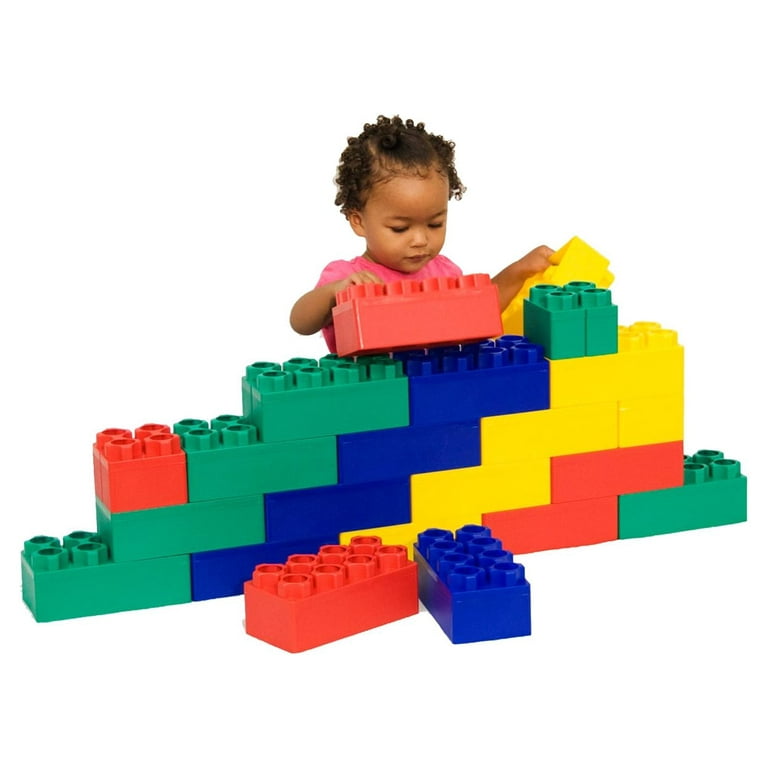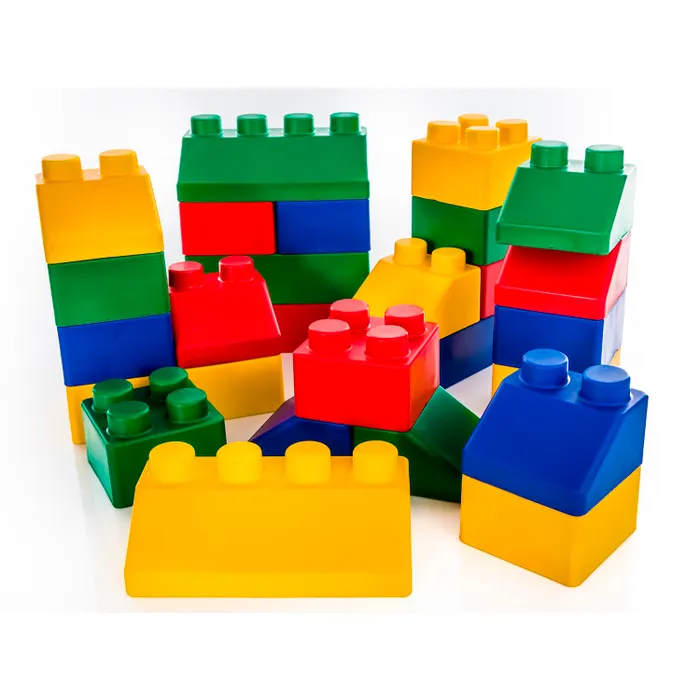The Concept and Appeal of Giant Lego Blocks
Giant Lego blocks captivate the imagination of both children and adults alike. These outsized versions of the classic toy are not only entertaining but serve numerous creative and practical purposes in modern design. Their appeal lies in their customizable nature. Users can easily assemble and disassemble them to create structures as simple as a coffee table or as complex as a full-scale architectural model. What truly makes giant Lego blocks a darling in the design community is their playful aesthetic. They evoke a sense of nostalgia while blending into innovative design schemes. Their bright colors and familiar shapes can add a whimsical touch to any space.

Beyond visuals, these blocks are known for their durability. Made from high-strength plastics, they can endure wear and tear, making them suitable for long-term projects. Their interlocking ability also offers great flexibility and stability in construction, which is essential in both temporary and permanent structures. The modular nature of giant Lego blocks makes them incredibly versatile. Designers, architects, and educators embrace the ease with which they can transform ideas into tangible forms. In a world where customization and adaptability are prized, the giant Lego block comes in as a refreshing and innovative building solution that inspires creativity and practicality.
Architectural Wonders Built With Lego Bricks
Giant Lego blocks have revolutionized architectural models. Their flexible and durable properties enable the creation of striking and scalable structures. Architects and designers frequently explore the potential of these oversized blocks. They help in visualizing complex buildings in a tangible format.
In recent projects, giant Lego bricks have been used to construct life-sized replicas of famous landmarks. These include the Tower Bridge in London and the Roman Colosseum. Each model showcases intricate details. This demonstrates the precision that Lego blocks can offer in architectural modeling.
Moreover, these bricks enable rapid prototyping of architectural concepts. They simplify the process of testing and modifying designs. This is crucial in the early stages of development. As a result, designers save time and resources. Giant Lego blocks provide a practical and engaging way to present architectural ideas. They also encourage interactive participation during planning and reviews.
Adapting Giant Lego Blocks for Furniture Design
Giant Lego blocks are making a mark in the furniture design industry. Their modularity and durability make them a great choice for creating stylish and functional furniture. Designers and DIY enthusiasts are turning these playful elements into innovative pieces of interior décor. Here are some ways giant Lego blocks are adapted for furniture design:
- Coffee Tables: Assembling Lego blocks into customized coffee tables is now a trend. These tables can be the centerpiece of a living room, with colors and sizes tailored to fit any space.
- Shelving Units: Giant Lego blocks can create unique shelving units. Users can build them to their desired height and width, adjusting as their storage needs change.
- Seating Solutions: Configurable benches and chairs are possible with Lego blocks. They offer a creative touch for both indoor and outdoor seating.
- Desks: Building desks with giant Lego blocks allows for personalized workspace solutions. Desks can be designed to suit individual ergonomic needs while adding a playful vibe to the office.
- Bed Frames: Even bed frames can be constructed, offering a sturdy and customizable option for bedrooms. It’s a playful choice for children’s rooms, sparking both fun and functionality.
The flexibility in design offered by giant Lego blocks means furniture can evolve with changing tastes or needs. They also provide an interactive design experience that brings out the inner child in everyone. However, while they offer many creative possibilities, it’s important to consider structural integrity and weight limitations when designing furniture with these blocks.

Lego Inspired Urban Planning and Public Spaces
Lego isn’t just for the playroom anymore; it’s reshaping our cities. Urban planners and community designers are exploring the potential of giant lego blocks in public spaces. These colorful blocks offer a fresh approach to urban design. They allow for quick assembly of community structures. Parks, playgrounds, and even temporary event spaces can now spring up in no time. They’re perfect for pop-up projects, injecting fun and vibrancy into urban environments.
Here are a few examples of how giant lego blocks enhance urban spaces:
- Park Benches and Picnic Areas: With Lego, you can create durable, colorful benches and tables. Everyone from kids to adults enjoys these playful seating options.
- Public Art Installations: Giant Lego blocks serve as building blocks for eye-catching art. These installations become focal points for interaction and socialization.
- Modular Planters: Lego brings green spaces to life with customizable planters. They add charm to city streets and encourage urban gardening.
- Event Stands: Need a quick booth for a festival or market? Lego blocks can build temporary stands that are both sturdy and attractive.
- Interactive Play Spaces: Children and adults alike get drawn into Lego play areas. They offer a unique blend of recreation and learning in the heart of the city.
Urban areas across the globe are taking notice of the versatility and playful appeal of giant lego blocks. These projects not only brighten up public spaces but also promote community engagement. Everyone can partake in building and redesigning their environment, making city living more dynamic and adaptable.
Educational Applications of Large Scale Lego Blocks
Educational settings are finding innovative ways to use giant lego blocks. Traditional learning tools are evolving. Now, classrooms and educational centers include these tactile building bricks in their curricula. Here’s how they contribute to learning:
- Stimulate Creativity: Giant lego blocks challenge students to design and build. They come up with unique structures, using critical thinking and imagination.
- Teach Engineering Concepts: Physics and engineering can be daunting. With lego blocks, students grasp these subjects through hands-on experience. Building bridges or towers with lego blocks illustrates basic engineering principles.
- Enhance Problem-Solving Skills: Tasks with lego blocks require planning and strategy. Students enhance problem-solving skills while having fun.
- Improve Motor Skills: Young learners improve their dexterity. They learn coordination by snapping lego blocks together.
- Foster Teamwork: Group projects with lego blocks promote collaboration. Students learn to work together and value each other’s ideas.
- Aid in Mathematics Learning: Counting, patterns, and measurements come alive with giant lego blocks. Math becomes a hands-on, visual subject.
Educators recognize the power of play in learning. Giant lego blocks transform lessons into interactive, memorable experiences. Students of all ages benefit from the inclusion of this playful learning tool. From preschool circle time to university engineering courses, lego’s large bricks are shaping the future of education.
Creative Interiors: Using Lego Blocks for Room Decorations
Giant Lego blocks are not just toys or bulky construction elements; they’re revolutionizing room decor. Their bright hues and modular forms redefine interior aesthetics. Here’s how these playful blocks transform living spaces:
- Accent Walls: Create a bold statement wall with Lego blocks. Arrange them in patterns that express personal style. This adds life to any room.
- Lighting Fixtures: Design unique lighting by combining Lego bricks. They can form quirky lamp bases or colorful chandeliers.
- Room Dividers: Lego blocks build customizable dividers. They separate areas while adding a creative touch to open-plan living.
- Wall Art: Craft Lego mosaics or abstract pieces for wall decor. This is a great activity for families and adds a personal touch to homes.
- Toy Storage: Assemble Lego storage boxes in kids’ rooms. They keep spaces tidy and double as an interactive feature for children.
These interior design ideas show the versatility of giant Lego blocks. They make room decorations fun and engaging. In every use, they encourage owners to play and personalize their space. However, when creating with Lego, ensure the design meets the room’s practical needs and safety standards.
The Sustainability Angle of Using Lego in Construction
When it comes to building a sustainable future, giant lego blocks present an innovative approach. These blocks are more than just fun; they are contributing to eco-friendly construction methods. Here’s how they are making a mark in sustainable building practices:
- Recyclable Material: Giant lego blocks are often made from recycled plastics. This helps reduce waste and promote a circular economy.
- Energy Efficiency: The ease of assembly with lego blocks means less energy-intensive tools are needed. Building projects use less power, leaving a smaller carbon footprint.
- Reusable Elements: Unlike traditional building materials, Lego blocks can be disassembled and reused. This makes them ideal for temporary structures or frequent redesigning without waste.
- Longevity: Their durable design means a longer lifespan. Fewer replacements translate to less material consumption over time.
- Minimal Environmental Disruption: Construction with lego blocks often requires fewer resources and less site disturbance. This helps protect local ecosystems.
Sustainability in construction is crucial for our planet. Giant lego blocks show promising potential as a part of green building initiatives. They align with the goals of reducing waste, saving energy, and resources. By incorporating lego blocks into construction, we can build smarter, not harder, for a greener world.

Challenges and Considerations in Using Lego Blocks for Design Projects
While giant lego blocks have numerous advantages in design and construction, certain challenges and considerations must be taken into account.
- Structural Stability: Lego structures must meet safety standards. It’s vital to ensure they can withstand weight and pressure.
- Building Codes: Projects involving giant Lego blocks must comply with local building regulations, which may limit their use.
- Aesthetic Limitations: Though versatile, the blocks have a distinct look that may not fit every design concept.
- Customization Costs: Custom Lego solutions may be expensive. Budget constraints can affect project scope.
- Thermal Insulation: Lego bricks are not known for their insulation properties. Additional materials might be needed for temperature control.
- Acoustic Considerations: The blocks may not dampen sound effectively. This can be an issue in certain built environments.
- Weight and Transport: Large Lego structures are heavy. Transporting and handling these blocks requires planning.
Giant lego blocks inspire creativity, but they also demand careful execution to guarantee success. It’s important for designers to address these challenges to ensure their Lego-inspired projects are as functional as they are imaginative.
